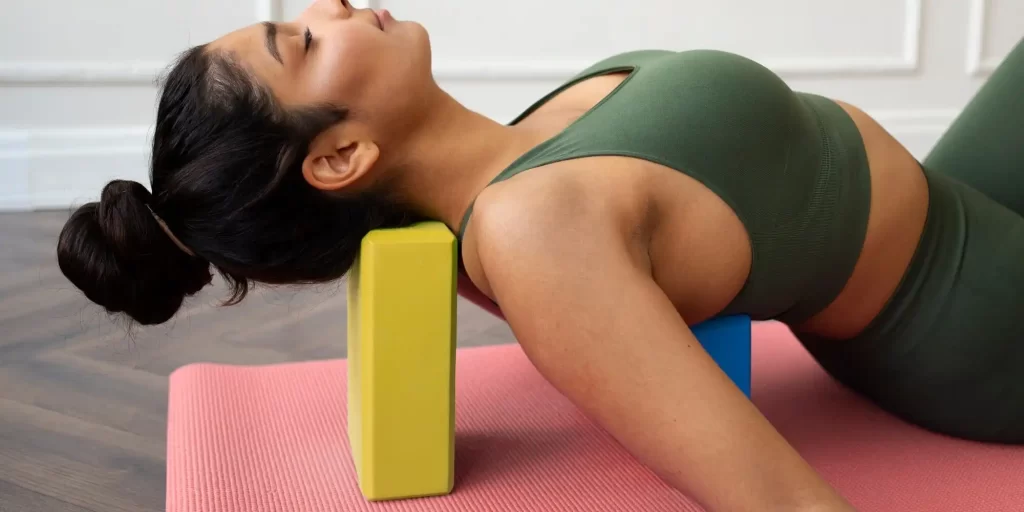In the ever-evolving world of fitness and wellness, the spotlight is increasingly turning towards sustainable practices. Yoga, a discipline deeply rooted in harmony and balance, is no exception. As yoga enthusiasts, it\’s not just about the poses and breathing exercises; it\’s also about the impact our choices make on the planet. One such conscious choice gaining momentum is the use of eco-friendly yoga blocks.
The Rise of Eco-Conscious Yoga Blocks
Traditional yoga blocks, often made from foam or wood, have long been the go-to props for practitioners seeking support and stability in their practice. However, the environmental footprint of these materials has raised concerns among the eco-conscious community. Enter eco-friendly yoga blocks – a breath of fresh air for both yogis and the planet.
Understanding the Need for Change
The production of conventional yoga blocks involves the use of non-renewable resources and chemicals, contributing to deforestation and pollution. The demand for more sustainable alternatives has sparked innovation in the yoga industry, leading to the creation of blocks made from recycled, renewable, and biodegradable materials.
The Eco-Friendly Materials Revolution
1. Cork: A Natural Wonder
Cork, a renewable resource harvested from the bark of cork oak trees, has become a popular choice for eco-friendly yoga blocks. The extraction process is sustainable, as it doesn\’t harm the trees, allowing them to regenerate and absorb even more carbon dioxide. Cork yoga blocks are not only biodegradable but also boast a natural texture that provides excellent grip and support.
2. Recycled EVA Foam: Second Chances
Eco-conscious manufacturers are turning to recycled EVA (ethylene-vinyl acetate) foam to create yoga blocks. This innovative approach repurposes post-consumer materials, reducing the amount of waste in landfills. These blocks retain the durability and lightweight characteristics of traditional foam blocks while minimizing their environmental impact.
3. Bamboo: Nature\’s Gift
Bamboo, known for its rapid growth and renewability, has found its way into the yoga block market. Its strength and flexibility make it an ideal material for manufacturing sturdy blocks that are both environmentally friendly and aesthetically pleasing. Choosing bamboo yoga blocks means supporting sustainable forestry practices.
The Benefits Beyond the Mat
Opting for eco-friendly yoga blocks goes beyond personal satisfaction on the yoga mat; it reflects a commitment to a healthier planet. By choosing sustainably produced yoga props, practitioners actively contribute to the reduction of carbon emissions, deforestation, and environmental degradation.
Making the Shift: A Personal and Global Impact
1. Conscious Consumer Choices
As consumers, our choices drive market trends. Choosing eco-friendly yoga blocks sends a clear message to manufacturers that sustainability matters. This demand encourages more brands to adopt environmentally responsible practices, fostering a ripple effect that extends to other facets of the yoga industry.
2. Setting a Trend in Studios
Yoga studios, as influencers in the wellness community, play a pivotal role in shaping sustainable practices. By incorporating eco-friendly props into their classes, studios not only align themselves with environmentally conscious values but also inspire their students to make similar choices.
3. Advocacy for Change
Individuals and communities passionate about yoga and sustainability can join hands to advocate for responsible manufacturing practices. This collective voice has the power to influence policies, encouraging governments and corporations to prioritize eco-friendly alternatives in the production of yoga props and beyond.
Nurturing the Planet with Every Pose
In the pursuit of physical and mental well-being, let us not forget the impact our choices make on the world around us. Eco-friendly yoga blocks offer a tangible way for practitioners to extend their commitment to sustainability beyond the yoga mat. As we strike a pose, let it be a mindful step towards a greener, more harmonious planet—one yoga block at a time.
Frequently Asked Questions (FAQs)
Q1: Why should I choose eco-friendly yoga blocks?
A1: Eco-friendly yoga blocks contribute to sustainable practices by using materials like cork, recycled EVA foam, and bamboo. This choice not only benefits the environment but also enhances your yoga practice with natural textures, durability, and grip.
Q2: How are cork yoga blocks eco-friendly?
A2: Cork yoga blocks are made from the bark of cork oak trees, allowing for sustainable harvesting without harming the trees. This process promotes tree regeneration, reduces carbon emissions, and provides a biodegradable alternative to traditional foam blocks.
Q3: Are recycled EVA foam yoga blocks as durable as traditional foam blocks?
A3: Yes, recycled EVA foam yoga blocks retain the durability and lightweight characteristics of traditional foam blocks while minimizing environmental impact. By repurposing post-consumer materials, these blocks offer both performance and sustainability.
Q4: What makes bamboo yoga blocks a sustainable choice?
A4: Bamboo yoga blocks are sustainable due to bamboo\’s rapid growth and renewability. Choosing bamboo supports responsible forestry practices, providing a sturdy and aesthetically pleasing alternative to traditional blocks.
Q5: How can my choice of yoga blocks make a global impact?
A5: Your choice of eco-friendly yoga blocks sends a clear message to manufacturers, driving the adoption of sustainable practices. Additionally, supporting studios that incorporate eco-friendly props and advocating for responsible manufacturing can create a positive ripple effect.
